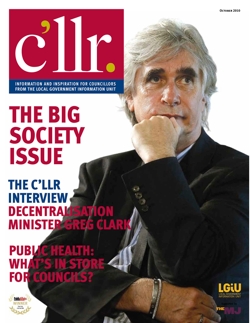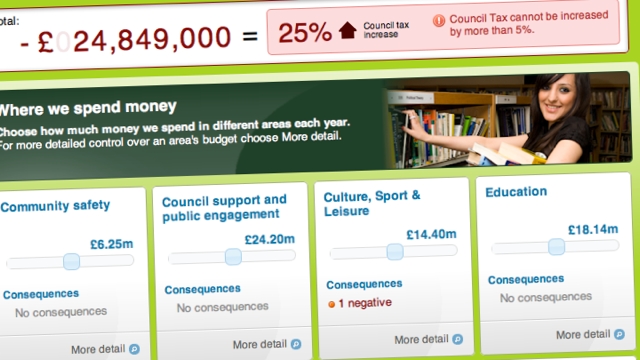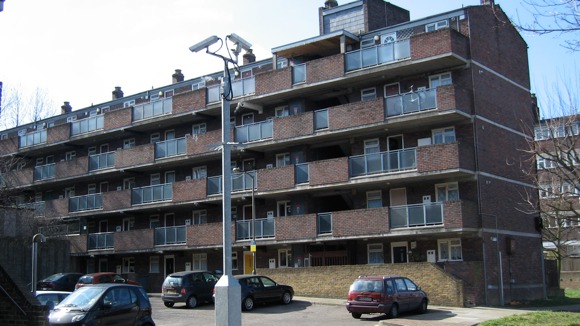Local Government is all about measurement (or at least it was until the coalition set about abolishing most of it). We were assessed, and assessed ourselves, on a range of criteria, outputs and scores. We’d rank ourselves according to the region we are in, or against ‘most similar groups’ of boroughs. We’d measure whether we’re in the top quartile, or suffer the angst of finding ourselves in the bottom quartile.
Sometimes we’d even stop and ask ourselves what benefit this brought.
Most measurement is irrelevant
An experience that sticks with me (and which I’ve probably written about before) was when canvassing in Merton in 2006.
I was on the doorstep talking to a woman who was perfectly happy. “But what about the state of the streets?” I asked, glancing around at the uneven, broken pavements, strewn with litter and week-old papers.
“Why, what’s wrong with them?” was her simple response.
She did not think there was a problem with Merton. That it didn’t score as highly on street cleaning as Wandsworth (and most other places, for that matter) didn’t bother her, she didn’t live in any of those other places, she lived in Merton and Merton did all right by her.
Conversely, it isn’t any consolation to a Wandsworth resident who thinks their street is dirty to know that, actually, it’s a lot cleaner than Merton. They don’t live in Merton, they live in their road, and that looks dirty to them.
So we spent our time completing irrelevant assessments, but as far as I know we’ve never actually tried to measure something that should be incredibly relevant: the health of local government.
Measuring the abstract
Now what I don’t mean is an assessment of an individual council in the way of the old Corporate Performance or Comprehensive Area Assessments. But an assessment of local government as an institution. We live in a political culture in which increasingly we are looking at localism, but paradoxically government is becoming more central.
Of course, localism doesn’t mean that the council should do everything – it shouldn’t – but if power is to be exercised at as low a level as possible and communities are to be empowered then surely councils are the best positioned to deliver on that localism promise.
The difficulty is in measuring something that doesn’t give itself to objective measurement; councils don’t have a collective heartbeat to log and monitor. But that is not a problem in other areas. Perhaps one of the best known subjective measures is the Doomsday clock. While it will be quite obvious to all when that hits midnight, what is the real difference between 11:53 and 11:54?
Even with seemingly more scientific measures there are difficulties. Take the Gini Coefficient, which attempts to measure inequality. While seemingly scientific there are all sorts of potential criticisms about methodology. But even then, there’s a fundamental argument to be had about what is a ‘good’ result. Assuming we accept there should be some inequality, if only to reflect experience and expertise at work, what is the acceptable level?
A perfect council
Politics means there will be no agreement on what a perfect council looks like. Even within parties there will be variations, interpretations and different flavours. However, there are some aspects on which there should be agreement. For example, local government should have some freedom. Wandsworth shouldn’t be able to declare war on Sweden, but shouldn’t we have the right to decide how we deliver services to residents?
And presumably few would argue that there should be a sense of connection between residents and their council, people should feel informed, there should be a high turnout at elections and people should see how the vote they cast (or most of their neighbours cast) has an impact on the direction and policies of the borough. There’d probably be a growing consensus there should be transparency, so people can easily see what a council is doing and get information about their local area.
If there can be a broad consensus on the framework in which a good council exists, the broad powers it has and the relationship it has with its residents, then surely we can measure it.
Sticking my finger in the air
Herein lies the difficulty. There are all sorts of measures you could try. What set me off thinking about this was a discussion I was having with someone on whether or not I would recommend a career in local government (as a councillor or an officer). A fairly straightforward measure might be the changes in numbers applying for graduate positions in local government and the civil service. In terms of engagement we might look at the turnout at elections. But others are far more subjective measures – can you ever objectively measure administrative power and freedom?
But to a degree accurate measure isn’t that important. If you take the Doomsday Clock it’s the arbitrary judgement of experts. There probably isn’t that much difference, in practical terms, between 11:53 and 11:54 – the point is that it provokes discussion, debate and raises awareness.
And I think this is something we need more of in local government. In the time I have been interested in and followed politics I’ve seen local government become, relatively, less and less important. From Thatcher onwards power has been centralised and local government devalued. Blair talked the localism game, but cloaked it in targets that meant councils could do little more than deliver central government goals.
I have hope for the coalition government. But I also know from 30 years of history that the words of an incoming administration are frequently forgotten as new policy priorities emerge and local government changes political complexion. My biggest fear is that currently localism and populism are very close, and I have my suspicions which will win when they diverge.
The Digby
So in the spirit of arbitrary judgements I propose that we measure the health of local government with the Digby Index (the naming of which I will explain if anyone pays any attention). It’s simple, it goes from zero to one: zero being no local government and one being ‘perfect’ local government. And it’s measured to three decimal places (because I like the arbitrary, and also because it makes the smallest unit of measurement the milli-Digby).
I happen to believe that local government is probably looking the healthiest it has for decades. But that cannot overcome the fact that there has been decades of centralisation. Our powers are incredibly limited and most of our money comes via central government. Additionally, the mindset is still overcoming all those years of central direction. So although opportunities might be there, it’s still coming to terms with being in a position to overcome them. The threat is that they might not be able to adapt before a government (whether coalition or something else) starts centralising again.
On that basis I’m think the Digby index currently stands at 0.378, although there is the prospect for significant revision upwards.
What do you think?
 The following is the text of an article I wrote for the
The following is the text of an article I wrote for the 


 Yet more democracy in action last night at the Environment, Culture and Community Safety OSC.
Yet more democracy in action last night at the Environment, Culture and Community Safety OSC.
 Since I’ve moved to London I’ve had five main addresses, not including a couple of stints ‘between homes’. Effectively a different home every 2.6 years.
Since I’ve moved to London I’ve had five main addresses, not including a couple of stints ‘between homes’. Effectively a different home every 2.6 years.